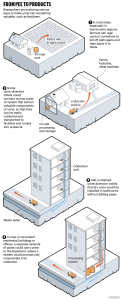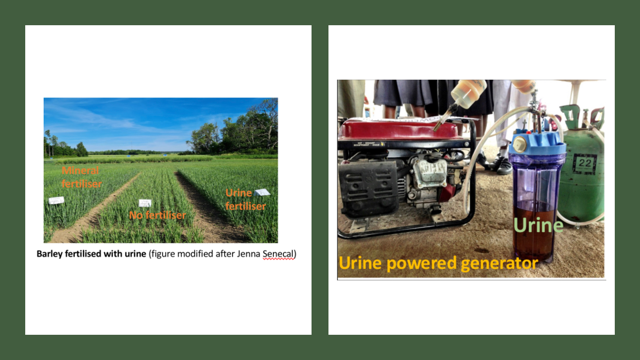By Dr Gabriel Uguru
Join our WhatsApp Channel
You have heard of people stranded in desert islands drinking their urine to quench thirst. Dogs and Tigers use their urine to mark their territory.
In 2012 at the Maker Faire Africa in Lagos, Nigeria, four girls aged between 14 and 15, created a urine-powered generator! In Ancient Rome, there were urine traders, and as any good old soldier will tell you, urine is used to soften hard army boots so that the wearer will not develop corns during long marches! And history is replete with the healing power of urine besides other uses.
Perhaps a little history here will help to explain further the importance of urine. In the 9th Century AD, the Chinese invented gunpowder. This was very useful as it makes the art of war very easy and efficient. You can just shoot your opponent down instead of exerting unnecessary energy, sweating and grunting like a hippo while knocking the bejesus out of each other with clubs. Besides, size disparity is levelled by gunpowder – a midget armed with a gun can easily kill a giant without breaking a sweat! In the ancient times, people build strong walls to ward off attacks; but with canons (made with gunpowder), you can knock holes in the walls and flatten the walls within a short time. This saves time and resources, which otherwise would have been employed laying sieges.
Gunpowder is made of three important components: 10 per cent sulphur, 15 per cent charcoal, and 75 per cent potassium nitrate (also called saltpetre). The former two components were commonly available in the medieval times, but the potassium nitrate was pretty expensive and difficult to source. Therefore, ancient gunsmiths just used a mixture of urine, dung, rotten matter (or earth), and lime – preference was given to overnight and strongly fermented urine from beer drinkers! Urine in the mixture is the source of ammonia, which bacteria convert into nitrates in the presence of oxygen. Urine is already rich in potassium, thus the basic ingredient of saltpetre is provided by urine.
Urine is very rich in nutrients. A large percentage of urine is water, hence people dying of thirst can drink their urine to survive. When your body metabolise proteins, the by-product is urea. The characteristic smell of urine is as a result of ammonia gas produced when urea combines with water, a process made possible by an enzyme called urease! Besides urea, you can also find sodium, potassium, chlorides, creatinine, phosphorus, and a host of other valuable micronutrients in urine.
The urea in urine is what particularly makes urine attractive as natural fertiliser, besides potassium and phosphorus. The urea provides the nitrogen, and the potassium and phosphorus components complete the basic growth requirements for plants.
Artificial fertiliser is made with synthetic urea, and excessive use of fertilisers leads to a process called eutrophication. This simply means that excessive nutrients in the form of fertiliser leach into waters and cause algae to bloom. The breakdown process of algal blooms by microorganisms coupled with excessive growth of algae, other microorganisms and plants lead to a reduction in the concentration of dissolved oxygen in water. In effect, water quality is affected by excessive use of artificial fertilisers. Besides affecting water quality, the nitrogen in artificial fertiliser is converted by microorganisms to nitrous oxide (N2O), which is a major greenhouse gas!
READ ALSO: That Poo Therapy For Longevity
The volatile ammonia, which in the presence of water is catalysed from urea by the enzyme, urease, can be turned into ammonium nitrates by microorganisms when urine is stored in a tank. This is then concentrated and used as organic (natural) fertiliser.
A project currently running in Gotland, the largest Swedish island located in the middle of the Baltic Sea with a population size of 58,000, termed the Gotland Project, is aimed at recovering urine from sewage and recycling it into fertiliser. An experiment conducted during the project did show that barley fertilised with urine grows better than the ones fertilised with chemicals (i.e. artificial fertiliser) or grown naturally without any fertiliser (see picture, above). This unarguably demonstrates the superiority of urine-made fertilisers over artificial ones.
Besides using urine to fertilise crops, catching urine instead of flushing it down the toilet saves vast amounts of water, which is particularly an attractive venture especially in areas with acute shortage of water, and in low and medium income countries with antiquated and poorly maintained sewerage systems.
Collecting and recycling urine as fertiliser is not only a useful toolkit in the fight against greenhouse emissions but reduces pipe corrosion in sewer systems. In fact urine can be used as liquid fertiliser without the need to dry it down and grind it into powder, and the practice is common in many parts of the world.
Urine-diversion, which involves the process of separating urine from sewage and recycling it into fertiliser, is now the current area of research and development by many companies and research institutions around the world, including South Africa and Ethiopia.
The initial urine-diverting toilets produced in the 1990s had a small basin at the front to catch urine. This means that you have to sit down to pee and also you must aim carefully, an exercise difficult to accomplish at the best of times how much more when you are drunk! But over the years the designs have improved ranging from foot-powered conveyor belts to let urine drain away and the faeces to be transported into a composting vault, to installation of sensors that direct urine to separate outlets.
In Sweden, about 135,000 urine-diverting toilets are in use, mostly in holiday homes, while about 80,000 urine-diversion dry toilets were installed in rural and semi-urban areas of Durban, South Africa, as at 2000. The design process was such that urine drains into the soil and faeces falls into a collecting vault emptied periodically. But the terrible smell and the fact that one has to aim carefully while sitting down discouraged people in South Africa from using them.
A new design in 2017 by Harald Gründl and coworkers did away with the need for people to aim while using the toilets as well as made the urine-diverting aspect of the toilets less intrusive. The design further improves on the olfactory issue associated with the early designs by removing the odour. Current waterless toilets separate urine by leveraging on the surface tension of water to direct urine to a concealed outlet while allowing faeces and other wastes to pass into another outlet.
Waterless urinals is now common, in fact if you pop into your local McDonalds or KFC, chances are that a waterless urinal is in place. Urine-diverting toilets are also being planned for installation in Paris, France. Many companies and universities all over the world are designing improved versions of urine-diverting toilets ranging from installing drain pipes connected to storage tanks to collect urine; using magnesium to recover phosphorus from urine resulting in a fertiliser precipitated compound called struvite; down to introducing citric acid into waterless urinals and urine-diverting toilets whereby the urine is concentrated through a repeated freezing and thawing process.
A good urine sample is sterile and devoid of any microorganisms, if otherwise, it indicates an underlying disease e.g. urinary tract infection (UTI).
However, urine is a rich medium for microorganisms and as such should be treated before use as fertilisers. One way of doing this is to pasteurise the urine (i.e. application of heating to more than 70oC for about 15 seconds or more) or filtration of the urine using a resin in a process called ion-exchange chromatography.

In fresh urine, the nitrogen content is in the form of urea but microbes in the external environment secrete the enzyme, urease, which hydrolyses urine by degrading urea to gaseous ammonia, thus losing nitrogen into the atmosphere. To avoid this loss of nitrogen, in Sweden, they are making the urine alkaline by adding a little metal hydroxide like magnesium hydroxide and calcium hydroxide, to fresh urine. This shifts the pH to above the value of 10 thereby inhibiting urease and resulting in complete recovery of the nutrients contained in urine.
Using such method aforementioned, Professor Bjorn Vinnerås’s lab reported that, “Drying this alkalised urine results in complete recovery of nutrients, including all nitrogen, and a powder containing 20% nitrogen, 2% phosphorus and 5% potassium. Because water is removed, less than 30 kg of solids per person need to be collected every year, and the powder can be easily stored and applied safely as crop fertiliser, as pathogens are rapidly inactivated during treatment.”
On a serious note, joking aside, urine capture is becoming a big business. It is another way to ameliorate global warming by using environmentally friendly urine as fertiliser. In the current world we live in, nothing goes to waste rather everything is recyclable.
Ok, picture this scenario, if you could: you went into your local pub last year and had too much beer, causing you to pee a lot. The urine was captured, dried and hammered into powder. This powdered urine was used to fertilise barley, which were used to brew another beer. This year, you sauntered into the same pub and ordered a pint of beer brewed with barley fertilised with your urine! You polished off the beer and ordered another pint. That, my friend, is called recycling – you have just drunken your urine and reduced your carbon footprint in the process! Thank you very much. The world needs people like you.













Another great article from which you can learn something new and enrich your knowledge! As usual thank you Gabriel for the great work and looking forward to reading the next one!